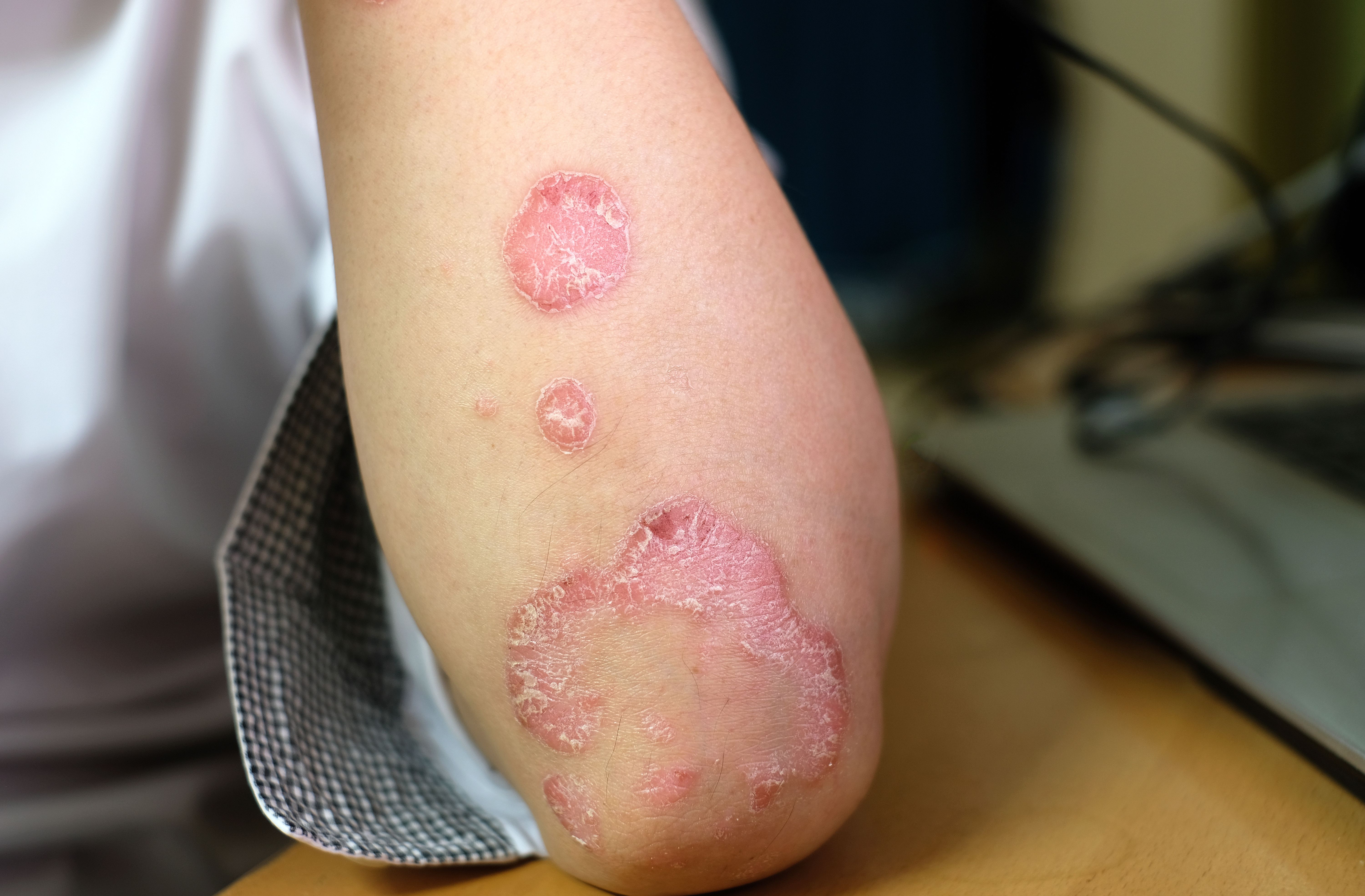- Acne
- Actinic Keratosis
- Aesthetics
- Alopecia
- Atopic Dermatitis
- Buy-and-Bill
- COVID-19
- Case-Based Roundtable
- Chronic Hand Eczema
- Chronic Spontaneous Urticaria
- Drug Watch
- Eczema
- General Dermatology
- Hidradenitis Suppurativa
- Melasma
- NP and PA
- Pediatric Dermatology
- Pigmentary Disorders
- Practice Management
- Precision Medicine and Biologics
- Prurigo Nodularis
- Psoriasis
- Psoriatic Arthritis
- Rare Disease
- Rosacea
- Skin Cancer
- Vitiligo
- Wound Care
Article
New Year, New drugs for Psoriasis
Author(s):
According to one expert, recently completed phase 3 trials of novel drugs have shown impressive results, with 2021 expected to be an exciting year that will bring further advances in treatment options for patients with moderate-to-severe plaque psoriasis.
With completed phase 3 trials of novel drugs showing impressive results, 2021 is expected to be an exciting year that will bring further advances in treatment options for patients with moderate-to-severe plaque psoriasis, says Bruce E. Strober, MD, PhD.
Strober is Clinical Professor of Dermatology, Yale University, New Haven, Conn. He reviewed upcoming developments in psoriasis therapeutics and new safety data on the interleukin-17A (IL-17A) inhibitors at Maui Derm for Dermatologists 2021.
First-in-Class Biologic
Bimekizumab (UCB), a dual targeting monoclonal antibody that inhibits IL-17A and IL-17F, has completed a series of phase 3 trials that compared the investigational subcutaneous agent administered every four weeks against placebo, adalimumab (Humira, AbbVie), secukinumab (Cosentyx, Novartis), and Ustekinumab (Stelara, Janssen). The results of these studies indicate that bimekizumab will be the most effective biologic therapy with respect to its ability to achieve a 90% to 100% reduction in Psoriasis Area and Severity Index (PASI) score, said Strober.
“The PASI 90 rate for patients treated with bimekizumab at the week 16 primary endpoint in all of the phase 3 trials was in the range of 85% to 90%. Results from ongoing phase 3 trials are likely to show that bimekizumab is also very effective for treating psoriatic arthritis,” said Strober.
The safety profile of bimekizumab appears similar to available IL-17A inhibitors except for a higher risk of Candida infections. Across the studies, Candida infections occurred in 10% to 20% of bimekizumab-treated patients, which is approximately fivefold higher than the rate reported for IL-17A inhibitors in their trials. As with the IL-17A blockers, it is likely that the labeling for bimekizumab will include a warning about its use in patients with a history of inflammatory bowel disease, said Strober.
Novel Oral Agent
Deucravacitinib (BMS-986165, Bristol Myers Squibb) is a novel, oral, selective tyrosine kinase 2 (TYK2) inhibitor, inhibiting IL-12, IL-23 and Type 1 IFN pathways, creating a potential new class of molecule distinct from approved JAK inhibitors 1, 2 and 3. The deucravacitinib phase 3 psoriasis clinical trial data have not yet been publicly released but are expected to show robust efficacy and a favorable safety profile, said Strober.
Because of its novel mechanism of enzyme inactivation, deucravacitinib does not cause inhibition of multiple JAK signaling pathways that explains the potentially serious side effects and safety warnings associated with JAK inhibitors that act by binding the kinase domain of JAK family enzymes.
“The kinase domain of the JAK family enzymes are very similar so that a drug that binds to this active site of one JAK enzyme will promiscuously bind to some extent to other JAKs, which has implications for safety,” explained Strober.
“Deucravacitinib binds a domain on TYK2 that is not shared by the other JAKs and theoretically would be less likely than other JAK inhibitors to cause hematologic changes and generalized immunosuppression. If deucravacitinib is approved, it remains to be seen if these differences are reflected in its label’s warnings and recommendations for laboratory monitoring.”
Secukinumab Label Changes
Based on its phase 3 study results, secukinumab is expected to join ixekizumab (Taltz, Eli Lilly) as an approved IL-17A inhibitor for the treatment of moderate-to-severe plaque psoriasis in children aged ≥6 years who are candidates for systemic or phototherapy.
“As with ixekizumab, it will be important to carefully screen children for a history of inflammatory bowel disease before treating them with secukinumab,” adds Strober.
Results from a multicenter, randomized double-blind study investigating secukinumab in patients weighing ≥90 kg are expected to lead to new dosing information for this subgroup of heavier patients with psoriasis with a recommendation to treat every two weeks. The PASI 90 rate at week 16 in the study was 73.2% for patients treated every two weeks versus 55.5% for those treated every four weeks.
“Approval for increasing the frequency of administration will be important because many heavier patients do not maintain a response to secukinumab when it is used every four weeks,” said Strober.
Nail Psoriasis
Strober also presented data from a post hoc analysis of the subgroup of patients with nail psoriasis who participated in a phase 4 trial comparing ixekizumab and adalimumab for the treatment of psoriatic arthritis. Beginning at week 24 and at subsequent visits through week 52, the percentage of patients with complete resolution of fingernail psoriasis ranged from 80% to 88% for ixekizumab versus 53% to 72% for adalimumab.
“From this trial and another study comparing ixekizumab and ustekinumab, it is becoming clear that the IL-17 inhibitors are probably the most effective drugs we have for normalizing psoriatic nails,” said Strober.
New Safety Insights
Post-marketing data on cases of malignancies and serious infections in patients treated with IL-17 and IL-23 inhibitors are reassuring about the risks of these safety issues in patients treated with these newer biologics.
“Excluding nonmelanoma skin cancers, the rates of malignancies and other serious infections are low for all of the biologics in these two classes and similar to the background rate in the psoriasis patient population,” said Strober.
Disclosure: Dr. Strober serves as a consultant, advisor, investigator, and/or speaker for companies that market or are developing systemic medications for the treatment of psoriasis.
Newsletter
Like what you’re reading? Subscribe to Dermatology Times for weekly updates on therapies, innovations, and real-world practice tips.







